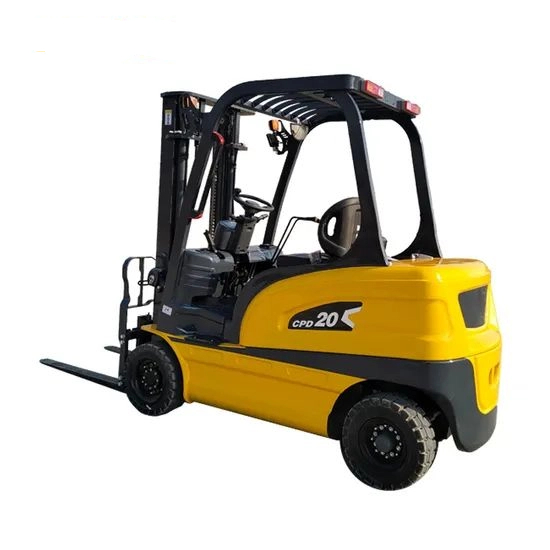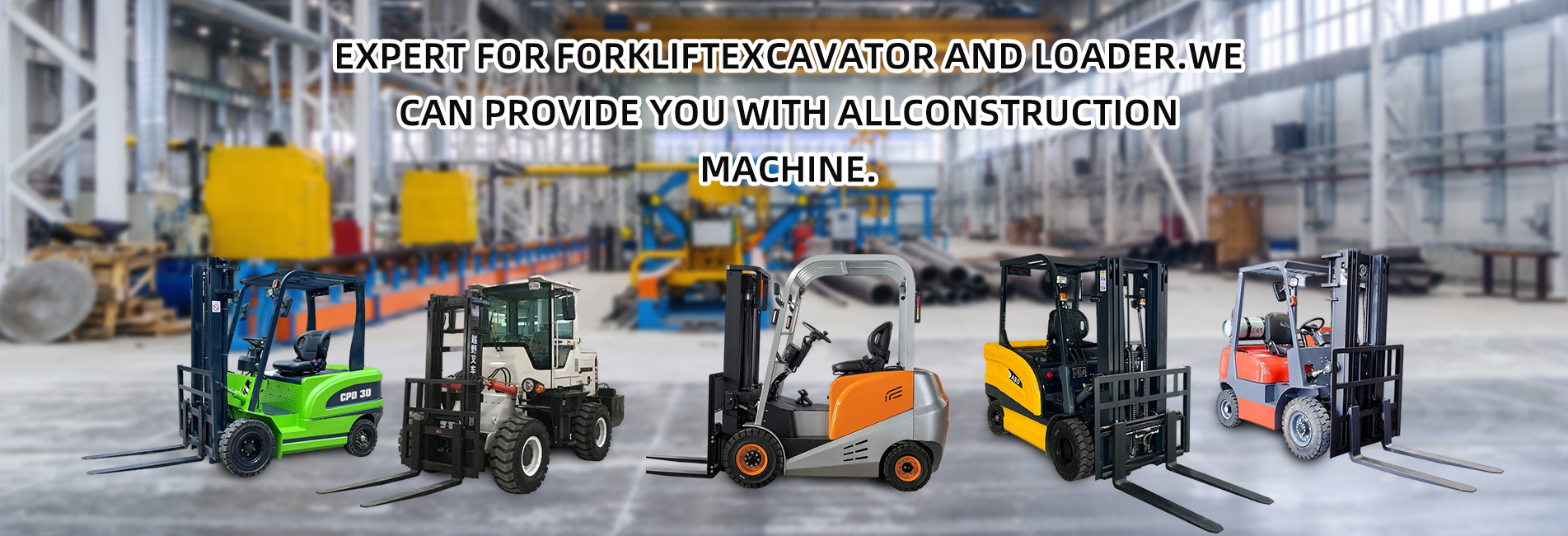The safety of electric forklifts is one of the core considerations for users when making a choice. Their safety performance is not only related to the protective mechanisms in their design but also closely linked to the operating environment and operational specifications. The following analysis is conducted from three dimensions: core safety advantages, potential risk points, and safe usage suggestions, to help gain a comprehensive understanding of their safety:

Compared with fuel-powered forklifts, electric forklifts have inherent safety advantages in multiple dimensions, making them particularly suitable for scenarios with high safety requirements:
Electric forklifts rely on battery power, eliminating the risks of fuel leakage (volatile gasoline and diesel can cause fires) and exhaust gas poisoning (such as carbon monoxide). When used in enclosed spaces (such as warehouses and workshops), they can significantly reduce the probability of safety accidents like explosions and suffocation.
The motor starts smoothly, without the "idle vibration" of fuel engines, resulting in stronger vehicle stability during operation and reducing the risk of goods shaking or rollover caused by sudden power fluctuations.
The noise is extremely low (usually ≤70 decibels, while fuel-powered vehicles are generally ≥90 decibels), allowing operators to hear surrounding sounds more clearly (such as warning signals and colleagues' calls), thus reducing collision accidents caused by auditory interference.
Most electric forklifts are equipped with a regenerative braking system, which automatically decelerates when the accelerator pedal is released. Its response speed is faster than the mechanical braking of fuel-powered vehicles, and it can shorten the braking distance in emergency situations.
With zero emissions and no oil fumes, they prevent operators from developing respiratory diseases due to long-term inhalation of exhaust gas. They are especially suitable for industries with high cleanliness requirements such as food and pharmaceuticals, and also comply with the strict requirements of environmental protection regulations for indoor operations.
Despite their obvious advantages, electric forklifts still have specific risks that need to be avoided through standardized management and technical protection:
Electric Shock Risk: If the wiring is aging or connections are loose during battery charging, it may cause short circuits or electric leakage.
▶ Avoidance: Use original chargers, regularly inspect charging lines, operators should wear insulating gloves, and set up "No Smoking" and "High Voltage Danger" signs in the charging area.
Fire Risk: Overcharging of lead-acid batteries may produce hydrogen (flammable and explosive), and lithium batteries may catch fire when punctured or exposed to high temperatures.
▶ Avoidance: Keep the charging area for lead-acid batteries well-ventilated and avoid overcharging; choose lithium battery brands that meet national standards, equip with fire-fighting equipment, and prohibit unauthorized disassembly.
If insufficient battery power is not detected in time, the vehicle may suddenly stop during operation, causing goods to be stranded on ramps or in dangerous areas.
▶ Avoidance: Choose models with real-time power monitoring, set low-power warnings (such as alarming when 20% remains), plan charging time in advance, and equip with backup batteries to deal with emergencies.
Electric forklifts (especially light-duty ones) may roll over when operating under heavy loads or on ramps if overloaded or with shifted centers of gravity.
▶ Avoidance: Strictly abide by the rated load (do not overload), keep the center of gravity of goods close to the root of the forks, and reduce speed and keep the vehicle body perpendicular to the ramp when operating on ramps.
In low-temperature environments (≤-10℃), battery capacity drops sharply (lead-acid batteries may drop by more than 50%), and reduced power may lead to difficulty in starting or inability to climb slopes.
▶ Avoidance: Prioritize lithium batteries (with better low-temperature performance than lead-acid batteries) in low-temperature scenarios, or equip batteries with thermal insulation devices and preheat the batteries before operation.
Choose brands that have passed national safety certifications (such as CE, ISO) and ensure they are equipped with basic safety devices: Roll-over Protective Structure (ROPS), seat belts, fork limiters, emergency power-off switches, etc.
Regular maintenance: Inspect battery status (voltage, electrolyte level), braking system, and tire wear monthly; conduct a comprehensive safety inspection annually and replace aging components in a timely manner.
Operators must work with certificates. Training content includes: battery charging safety, emergency shutdown operations, cargo balancing skills, ramp operation specifications, etc.
Prohibit illegal operations: Such as standing on forks for lifting, overloaded handling, lifting/lowering forks while driving, etc.
The charging area should be set independently, away from fire sources and flammable materials, and equipped with fire-fighting equipment (such as dry powder fire extinguishers); the ground should be anti-slip treated to avoid electric shock caused by water accumulation.
Keep the operation area passages unobstructed, set speed limit signs (usually ≤5km/h indoors), and install anti-collision posts or warning lights to remind surrounding personnel.
The safety design of electric forklifts is more suitable for indoor and enclosed environments, with core advantages in low emissions, low noise, and stable operation. However, it is necessary to focus on preventing battery-related risks and endurance issues. As long as compliant equipment is selected, daily maintenance is done well, and operational procedures are standardized, their safety performance can fully meet the needs of most operating scenarios, especially suitable for industries with high requirements for environmental protection, health, and operational precision (such as food, pharmaceuticals, e-commerce warehouses, etc.).



